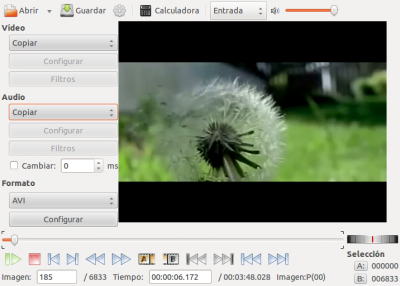

You’ll notice that the motion in a P-frame duplication datamosh tends to “follow itself”, i.e. P-frame duplication is the flip side of I-frame destruction, where you duplicate a P-frame multiple times in the same location to get a trippy “blooming” effect where the image distorts and gets very colorful. P-frame duplication: “Andy explodes”, /r/brokengifs 292 This will result in the image of your previous clip sticking on top of the motion of the next clip, because the video player thinks that it’s just continuously predicting the motion of clip without realizing that the actual image content has changed! This is where that “sticking” effect comes from in datamosh - a video file whose I-frames have been stripped, being misinterpreted by an innocent video player. This means that when a video player plays your I-frame-less video, it’ll force the image from the P frame that was before an I-frame onto the next P-frame. So what happens if you destroy an I-Frame, leaving nothing but P-frames on both sides? Well, you’ve removed the actual important image data that distinguishes the previous frame from the next frame. (If you want a more technical overview of how I, P, and B frames function, take a look at this Programmer Stack Exchange answer 171 and this post 47.) We don’t use them for glitch as much and you can pretty much ignore them. They’re basically like P frames, except they’re a little more efficient. Essentially you can think of them as tracking where exactly pixels move.ī-frames are bidirectional predictive frames.

They don’t actually contain much image data themselves but represent the abstract motion of pixels within chunks of the frame between frames. I-frames are “inter” frames, also called keyframes, which contain the entirety of the frame’s image data. However, storing every single image in a video takes up a lot of space! So these images are compressed as “frames”, with three types - I-frames, P-frames, and B-frames. Video files layer multiple images in sequence in order to make the appearance of motion. To understand I-Frame destruction (and the next section on P-frame duplication), we need to briefly cover how video compression works. I’ll show you a couple different file formats and what they look like when their data is destroyed. Different video file formats glitch in different ways depending on the video codec 332 that was used to compress the video file.

We typically do this with a hex editor, a low-level editing tool for looking at the contents of files, but I wrote a tool that can do this in a more automated way which I provide below. Here’s an example of a gif that was made by destroying the file:ĭon't look at the moon when the night is dark 260 This will make it glitch out in crazy, unpredictable ways and can produce some really cool effects (or break your file - always keep the original copy!). With file destruction, we take any old video file and mess with its data by simply opening it and replacing random bytes with other random bytes. Let’s run over the fundamental concepts of all of them before we go too deep.File destruction, I-Frame destruction, and P-frame duplication


 0 kommentar(er)
0 kommentar(er)
